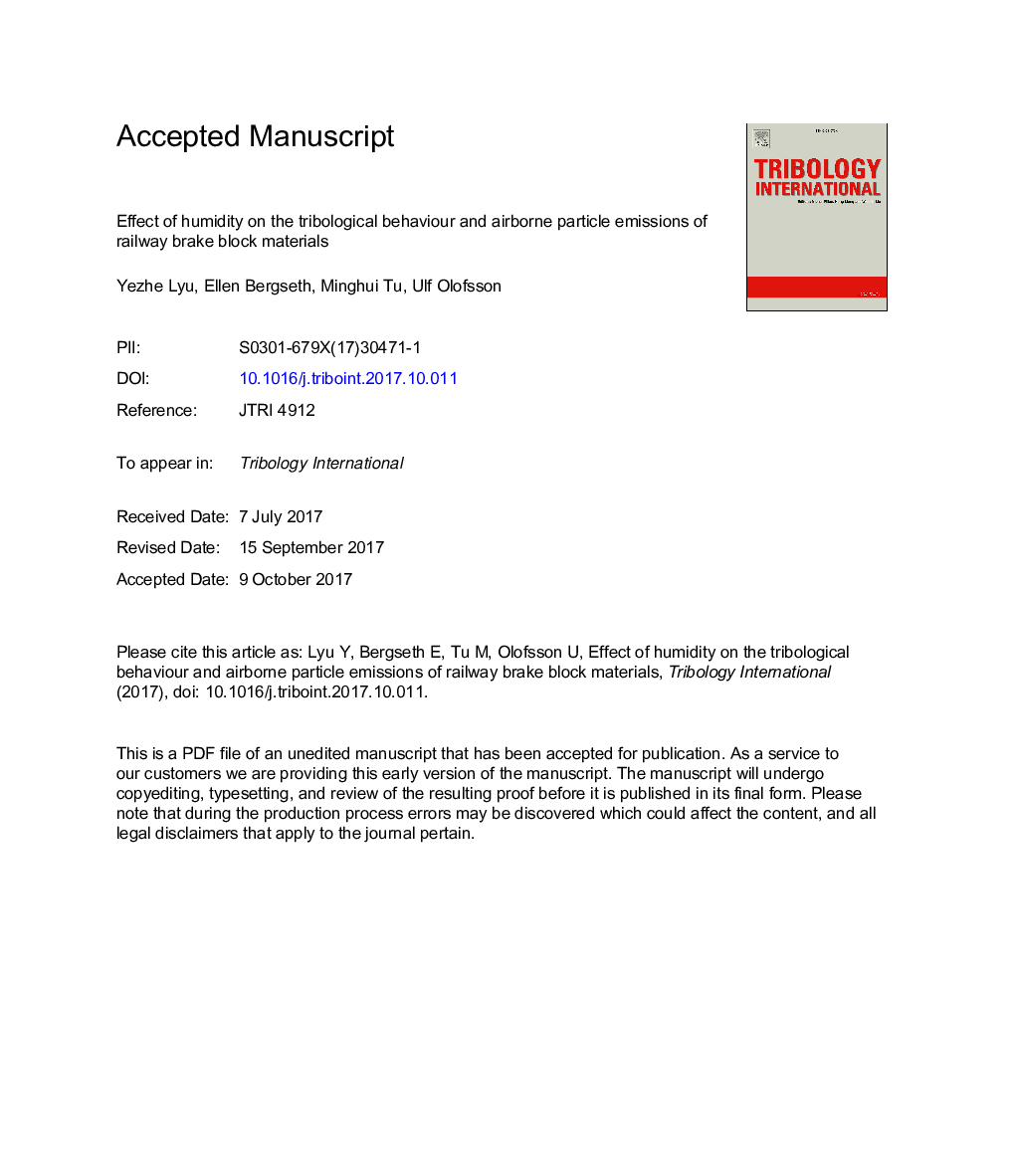| Article ID | Journal | Published Year | Pages | File Type |
|---|---|---|---|---|
| 7002373 | Tribology International | 2018 | 16 Pages |
Abstract
A pin-on-disc tribometer placed in a one-way ventilated chamber was used to investigate the effect of relative humidity on the tribology and airborne particle emission of three commercial railway brake block materials (grey cast iron, organic composite, and sintered). Cast iron showed the highest friction coefficient, particle emission and wear loss and organic composite exhibited the lowest. The generation of oxide layers on the worn cast iron surface resulted in a decrease in friction, particle emission and wear. Moisture adsorption by the organic composite leads to decreased friction coefficient and particle emission with increasing humidity. Relative humidity does not affect the friction coefficient of the sintered brake block, whose particle emission and wear loss significantly decline with increasing relative humidity.
Related Topics
Physical Sciences and Engineering
Chemical Engineering
Colloid and Surface Chemistry
Authors
Yezhe Lyu, Ellen Bergseth, Minghui Tu, Ulf Olofsson,
